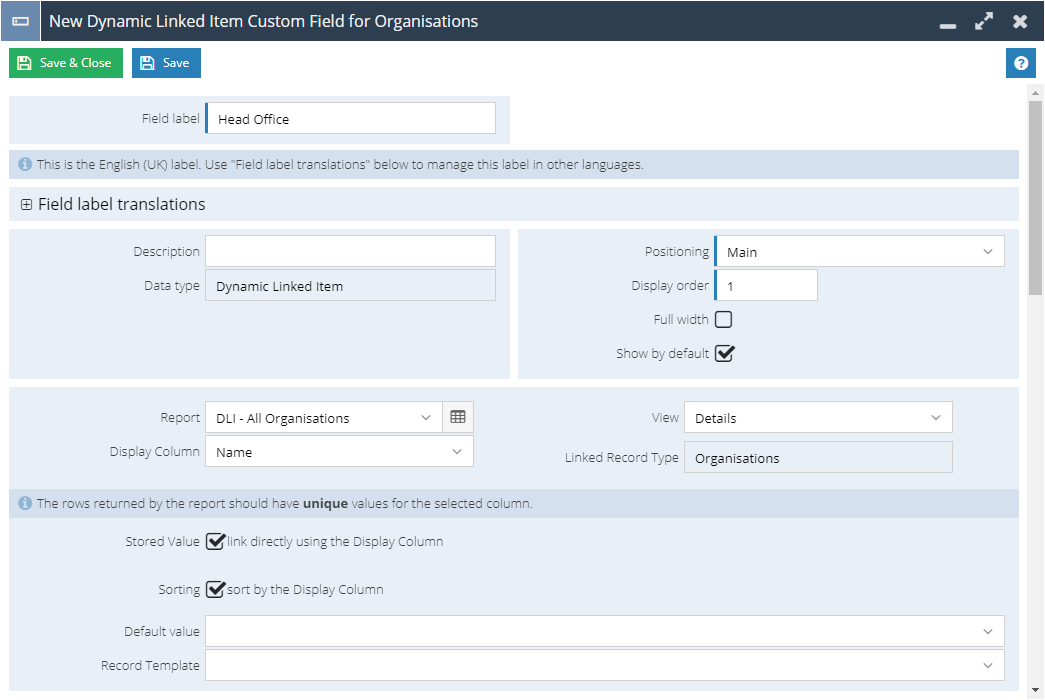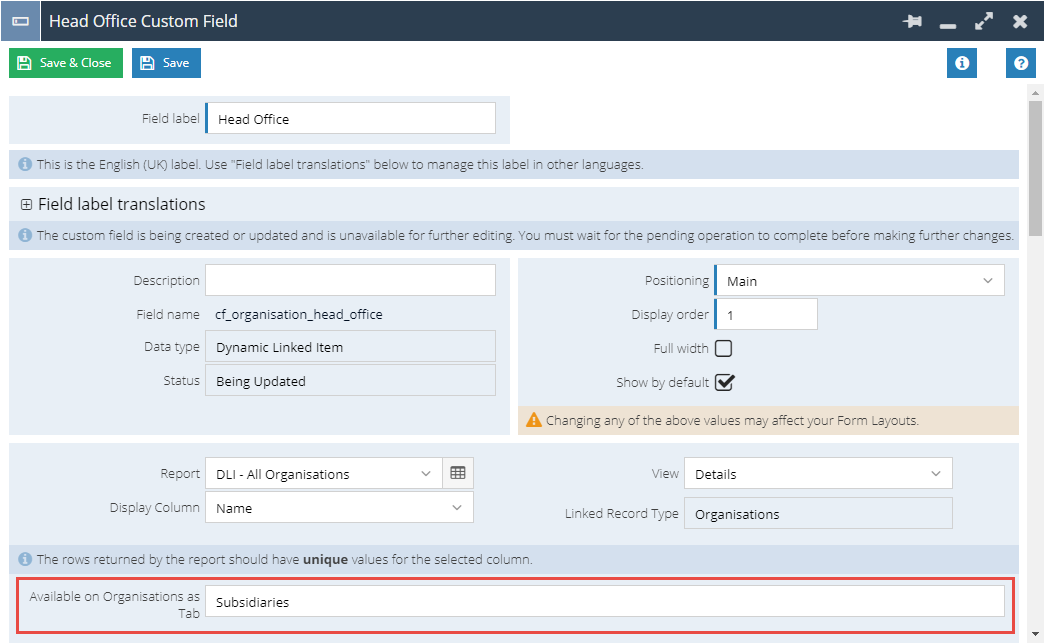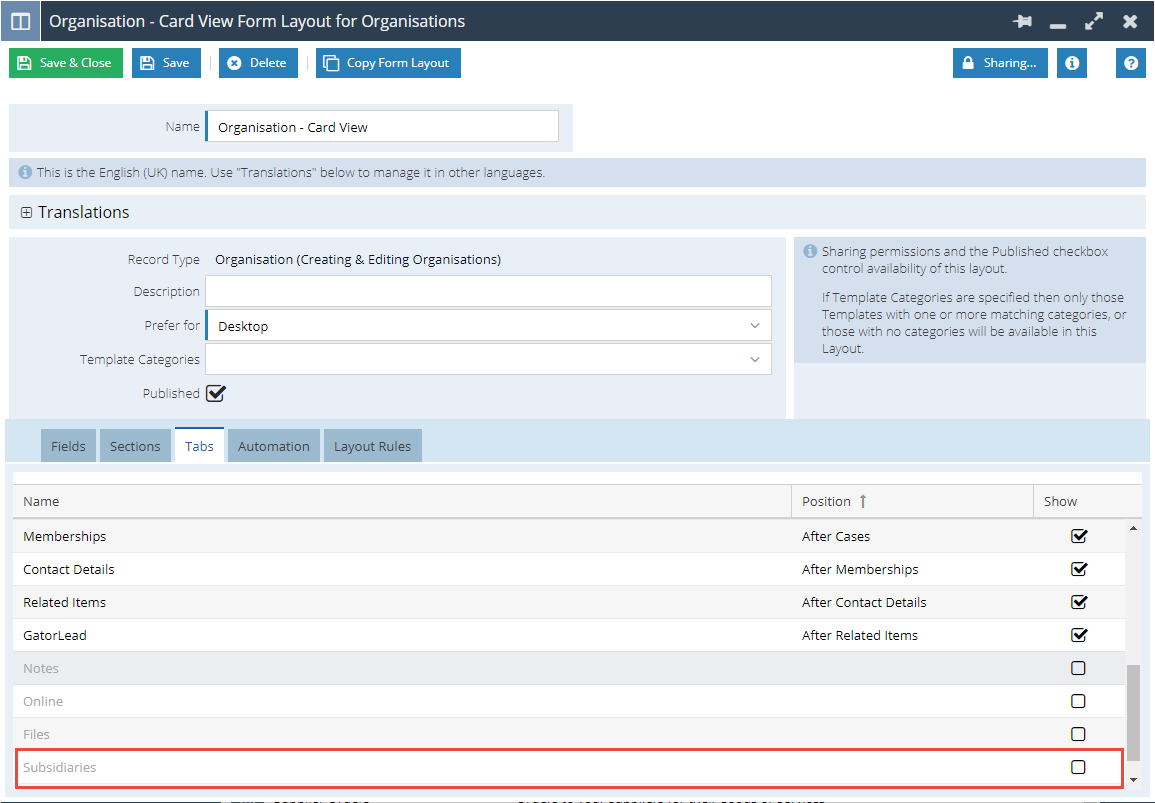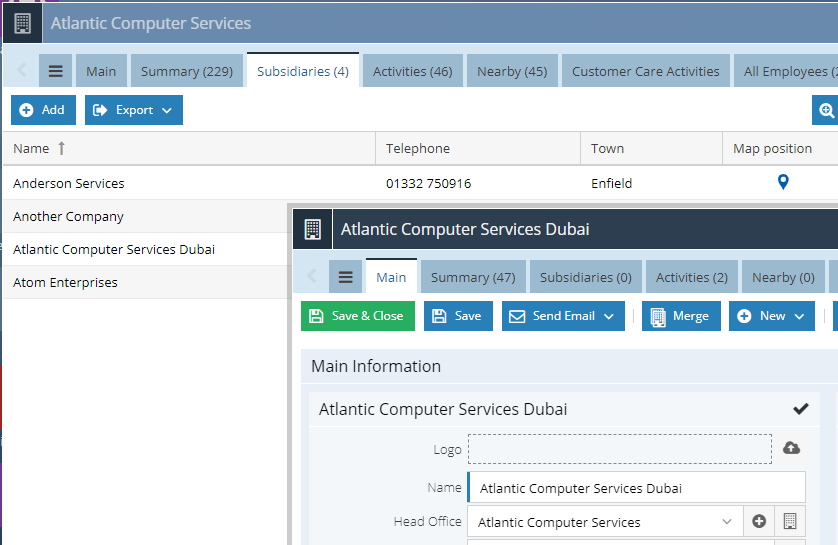Knowledgebase articles
- Welcome to the Knowledge Base
- Introduction
- Training
- Getting Started
- Preferences
- Activities
- Cases
- Importing Data
- Leads
- Marketing
- Introduction to Marketing
- Marketing Campaigns
- Mailing Lists
- Products
- Mailshots
- Upload Library
- Templates
- Event Management
- Compliance Records
- Force24
- Spotler Integration
- What is Spotler?
- Navigating your Spotler homepage
- GatorMail
- GatorLeads / Web Insights
- Tracking Code
- Setting up the Plugin
- Viewing Web Insights Data on your Form Layouts
- Domain Names and Online Activities
- Reporting incorrect Leads created through Web Insights
- Reporting on Web Insights data
- Using UTM Values
- Why aren’t Online Activities being created in the database?
- Why is GatorLeads recording online activities in a foreign language?
- GatorSurvey
- GatorWorkflow
- GatorPopup
- Opportunities
- Projects
- Integrations
- Mapping
- Electronic Signing Tools
- Creditsafe Integration
- Zapier
- Introduction to Zapier
- Available Triggers and Actions
- Linking your Workbooks Account to Zapier
- Setting up Zaps
- Posted Invoices to Xero Invoices
- Xero payments to Workbooks Tasks
- New Case to Google Drive folder
- New Case to Basecamp Project
- New Workbooks Case to JIRA Ticket
- Jira Issue to new Case
- 123FormBuilder Form Entry to Case
- Eventbrite Attendee to Sales Lead and Task
- Facebook Ad Leads to Sales Leads
- Wufoo Form Entry to Sales Lead
- Posted Credit Note to Task
- QuickBooks Online
- Survey Monkey responses to Tasks
- Multistep Zaps
- Email Integrations
- Event & Webinar Integration Tools
- GoToWebinar
- ON24
- Microsoft Office
- Outreach
- Installation
- Outreach Authentication
- Sync People to Outreach Prospects
- Sync Organisations to Outreach Accounts
- Sync Workbooks Opportunities to Outreach
- Sync Tasks/Activities from Workbooks to Outreach
- Sync Outreach Sequences to Workbooks
- Sync Outreach Sequence States to Workbooks
- Sync Outreach Sequence Step Numbers to Workbooks
- Sync Prospects/Accounts/Opportunities from Outreach to Workbooks
- Sync Outreach Tasks/Calls/Meetings to Workbooks
- Scribe/Workbooks Connector
- RingCentral
- Auditing
- Comments
- People & Organisations
- Reporting
- Introduction to Reporting
- Using Reports
- Introduction to Charts
- Exporting Reports
- Advanced Reporting
- Report Snapshots
- Dashboards
- Transaction Documents
- Introduction to Transaction Documents
- Displaying & Adding Transaction Documents
- Copying Transaction Documents
- Transaction Documents Fields Help
- Transaction Documents Line Items Help
- Printing & Sending Transaction Documents
- Managing Transaction Document Currencies
- Managing Transaction Document Statuses
- Setting a Blank Default Currency on Transaction Documents
- Credit Notes
- Customer Orders
- Invoices
- Quotations
- Supplier Orders
- Contract Management
- Sagelink
- Introduction to Transaction Documents
- Configuration
- Introduction to System Administration
- Users & Security
- Database
- Accounting
- Email Integrations
- Customisation
- Creating & Modifying Picklists
- Theme
- Record Types
- Creating Custom Fields
- Report-based Custom Fields
- Linked Fields & Reference Fields
- Record Templates
- Form Layouts
- Customising relationships between parties
- Opportunity Stages
- Custom Records
- Sign In Customisation
- Automation
- Contact Support
- Releases & Roadmap
Showing Linked Records in Tabs
This feature allows you to see at a glance a Tab showing records that have been linked to the parent record using a Dynamic Linked Item (DLI). For example, if you use a DLI to capture an Organisation’s Head Office, you could add a Tab to the Organisation record that lists all the subsidiaries of that company.
You can achieve something similar using a report tab but the Linked Records tab has the advantage of showing an accurate count of the number of rows and enables you to create new records directly from that Tab. Doing this automatically populates the DLI field with the parent record value.
Setting up a Linked Records tab
There are 3 steps to enabling a Linked Records tab (and a worked example of setting up a Subsidiary tab on an Organisation record is provided here).
-
Create your DLI on the record type you want to be the Parent.
-
Configure that DLI to display as a tab.
-
In a form layout, make the tab visible.
1. Create your DLI
Create your DLI in the usual way. For optimal performance, we recommend you Index your DLI. Click Save (not Save & Close, keep the DLI open for the next step).
2. Configure your DLI to display as a tab
Once your DLI has been saved the ‘Available on xyz record type as Tab’ field will appear. The ‘xyz’ text will change to reflect the Linked Record Type. In the example below it’s for an Organisation.

3. Make the tab visible in a form layout
Customise the relevant form layouts to include the tab.
Worked Example
These instructions show you how to create a tab on an Organisation record that displays that Organisation’s subsidiary companies.
1. Create your DLI
First set up the DLI report. This will be a report based on Organisations, and need to at least contain the Organisation name. If you have naming conventions for parent companies such as ‘xyz Head Office’, or another field like a picklist or checkbox that marks an Organisation as a Head Office, then ensure you use criteria in your report to only display these companies.
Then create the Dynamic Linked Item field. More detail on how to do this can be found here. Click ‘Save’ not ‘Save & Close’ so that the DLI window stays open to do the next step.

3. Configure the DLI to display as a tab
Once the DLI has been saved, fill in the ‘Display on Organisation as Tab’ field with a suitable name (e.g. ‘Subsidiaries’).

4. Make the DLI and Tab visible on Organisation records
More detail on how to do this can be found here.

You can see the result in the screenshot below. You could now configure this further by creating a new Form Layout specific to Head Offices so that the new Tab only displays on relevant Organisations.
